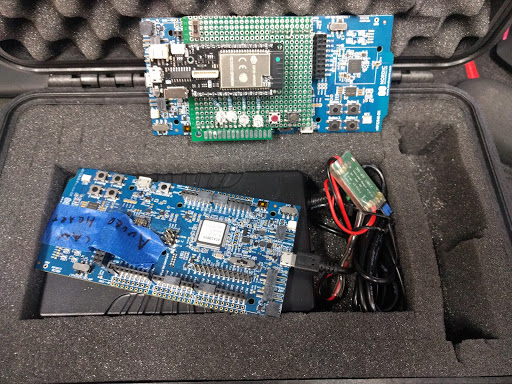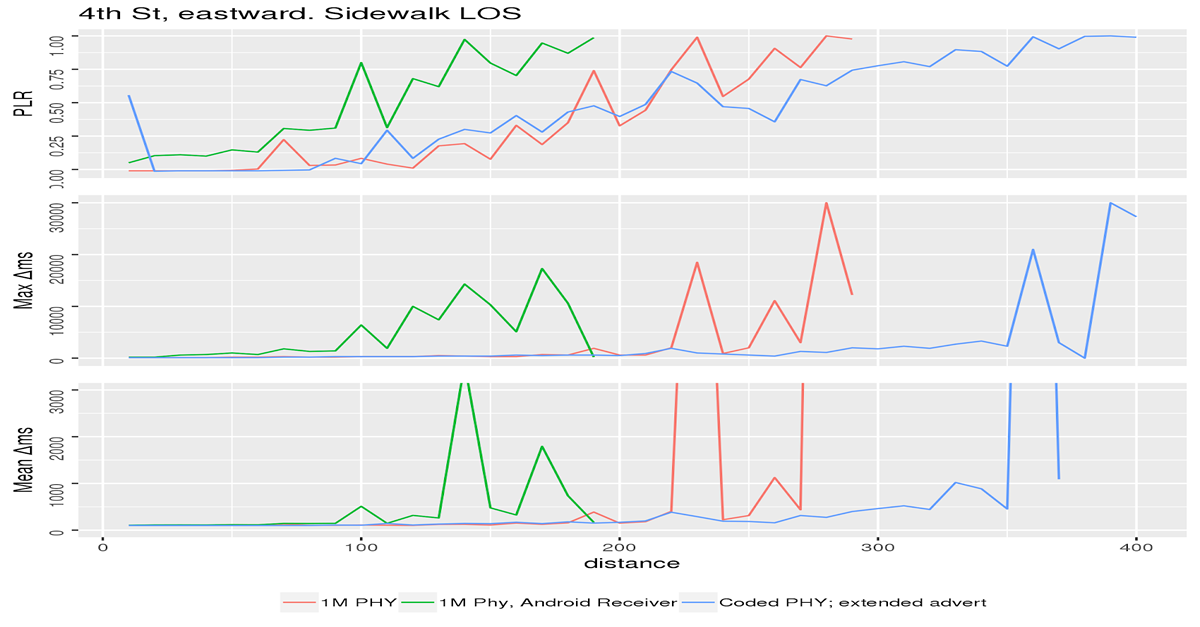It either works or it doesn’t. That’s the beauty of digital transmission. But what if “it” works some of the time, but not around physical obstacles, or at long distances, or if it struggles outside of the line of sight?
That’s the beauty of real-life testing.
To rewind for a moment, I’m talking about Tome’s interest in utilizing a form of wireless transmission for efficient, cost-effective communication between bicycles/scooters/pedestrians and motorized vehicles, whether it is by Bluetooth, ANT, C-V2X, or DSRC. That interest in safety became Tome’s ongoing bicycle-to-vehicle (B2V) project.
Our early (pre-C-V2X) work a few years ago explored dedicated short range communications (DSRC) and the possibility of integrating off-the-shelf DSRC devices with bicycles. In the connected world of the future, cars will communicate between each other and with the vulnerable road users. Everyone will know where everyone else is in the area. There will be fewer surprises for drivers from bicycles popping out from an alley or pedaling around a blind curve.
Although there were some interesting developments in bicycle DSRC, notably Charles River Analytics’ MAIN-ST project which integrated commercial DSRC hardware and sensors onto a bicycle, we believed that our B2V solution needed to be as small as possible and use minimal power, with a transmit-only mode to nearby vehicles, and the device’s production costs should be low enough to allow it to become ubiquitous. These beliefs led us back to a deeper exploration of Bluetooth signalling for B2V.
In late 2018, the Tome team put together a range test and throughput plan to informally gather reception data. At that time, Bluetooth 4.2’s advertising packet was limited to 32 bytes, barely enough to contain the overhead plus a simplified SAE J2735 Personal Safety Message (PSM). At the time, we expected Bluetooth 5, with its Extended Advertising (much, much larger advertising packet) and coded PHY (each bit repeated multiple times) to increase receivable distance and leave room for a full encoded PSM plus a reserve.
For simplicity, the transmitted data was just three bytes whose values increased sequentially. The tests were conducted using Bluetooth 4.2 and repeated using Bluetooth 5. The 1M PHY (1 mega-symbols per second) transmission rate was selected, and Bluetooth 5 used coded PHY and extended advertisements. A 10Hz advertising rate was programmed, chosen because that is the “typical” rate suggested in the SAE J2735 description of a Basic Safety Message (the PSM rate is not specified).

The Nordic and logging equipment.
The image (above) shows the Nordic Semiconductor nRF52840 Development Kit connected to a Lolin D32 ESP32 that logged the test results to an SD card. One nRF52840 was a transmitter; the other nRF52840 was a receiver. Note that we are using the in-board PCB Bluetooth antenna for each. No external antenna was used.
The test structure and configuration were suggested by this hands-on article from the Nordic DevZone.
Below are the test results taken in Royal Oak, Mich., near the Tome offices.

“Overall,” the Tome team noted in the final report, “this shows that the Bluetooth 4 1M PHY has a surprising range it can advertise at, but Bluetooth 5 with the Coded PHY is far better in terms of range and Δms. At 300m it might be missing 75% of the packets, but it’s still seeing 2/second on average.” Bluetooth signals were also received from an off-the-shelf Bluetooth 4 Galaxy S9 Android phone (shown in the green line).
This informal, line of sight test confirmed to us then, in 2018, that Bluetooth technology had potential in B2V safety communication.
In August 2019, at the B2V Workshop in Detroit, a bicycle and an electric scooter were each outfitted with Tome’s updated firmware in a Nordic nRF52840 board which was coupled to an inertial deduced reckoning device, and each continuously transmitted its respective location to a Nordic board which was integrated into the test car’s telematics.
The demonstration took place on a closed test track in the shadow of the magnificent Michigan Central Station building.I had an opportunity to take a ride in the test car to experience the satisfaction of detecting a bicycle and scooter using our Bluetooth implementation. Even though I knew the carefully choreographed maneuvers of the scooter, bicycle and car on the test track, and I knew what was going to happen, I still exclaimed in surprise when a red proximity warning flickered brightly on the car’s dashboard, and a moment later the bicyclist popped into sight from behind a staged storage container, riding toward the car’s path.
The real-life testing, building up to this demonstration, reinforced to me the importance of vehicles detecting vulnerable road users, and reaffirmed the importance of Tome’s B2V project.
- Other Bluetooth safety projects we think are cool:
A Bluetooth-Low-Energy-Based Detection and Warning System for Vulnerable Road Users in the Blind Spot of Vehicles (2020) Researchers at the IDLab (Ghent University, Belgium) mounted Bluetooth LE receivers at the blind spots on a semi tractor-trailer to detect and locate any vulnerable road users nearby. - GiveMeGreen! for Bicyclists A commercial product that, when integrated with traffic signals, detects approaching bicycles via Bluetooth and holds the signal green for their passing. Can also trigger intersection warning lights to indicate the bicyclist’s presence.
And finally, some cool bike safety products from companies we work with:
